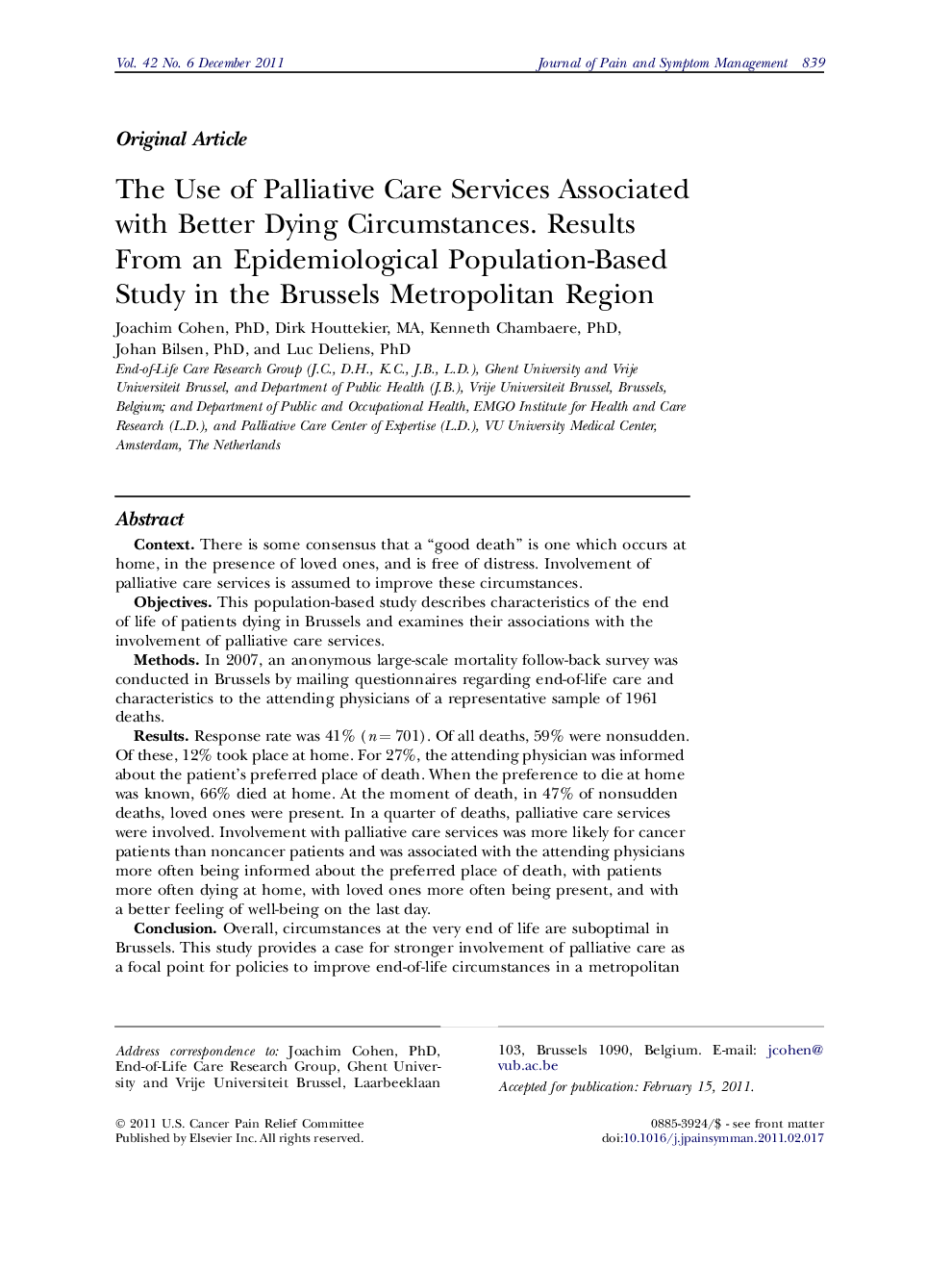| Article ID | Journal | Published Year | Pages | File Type |
|---|---|---|---|---|
| 2730164 | Journal of Pain and Symptom Management | 2011 | 13 Pages |
ContextThere is some consensus that a “good death” is one which occurs at home, in the presence of loved ones, and is free of distress. Involvement of palliative care services is assumed to improve these circumstances.ObjectivesThis population-based study describes characteristics of the end of life of patients dying in Brussels and examines their associations with the involvement of palliative care services.MethodsIn 2007, an anonymous large-scale mortality follow-back survey was conducted in Brussels by mailing questionnaires regarding end-of-life care and characteristics to the attending physicians of a representative sample of 1961 deaths.ResultsResponse rate was 41% (n = 701). Of all deaths, 59% were nonsudden. Of these, 12% took place at home. For 27%, the attending physician was informed about the patient’s preferred place of death. When the preference to die at home was known, 66% died at home. At the moment of death, in 47% of nonsudden deaths, loved ones were present. In a quarter of deaths, palliative care services were involved. Involvement with palliative care services was more likely for cancer patients than noncancer patients and was associated with the attending physicians more often being informed about the preferred place of death, with patients more often dying at home, with loved ones more often being present, and with a better feeling of well-being on the last day.ConclusionOverall, circumstances at the very end of life are suboptimal in Brussels. This study provides a case for stronger involvement of palliative care as a focal point for policies to improve end-of-life circumstances in a metropolitan area such as Brussels.
